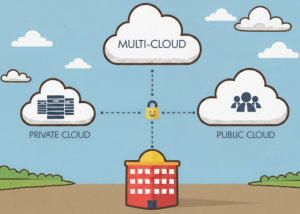Are your Cloud data costs skyrocketing? If so, you're not alone.

Cloud storage was positioned as the solution to solve your on-prem storage scalability issues but, while it was a way to reduce your need to purchase physical hardware for your on-prem data center, it has not been uncommon for early adopters to realize that not all data or workloads are a good fit for public cloud relocation at scale.
Cost isn’t the only factor at play here. Data Sovereignty, Compliance, Performance, Latency, and the rise of all things AI are also key drivers of the movement know as Cloud Repatriation.
Key Drivers of Cloud Repatriation
- High and Predictable Compute Demand: High resource demand and workload predictability make on-prem solutions more viable for long-running AI training
- Cost Optimization Control: Public cloud pricing can be extremely high and often exceed expectations
- Data Gravity & Sovereignty: Keeping data on-premises reduces latency and ensures compliance with data residency laws such as GDPR and CCPA
- Security & IP Protection: Hosting them in-house reduces exposure to third-party risks and cloud vendor lock-in
- Customization & Performance Optimization: On-prem environments allow for custom hardware configurations that fine-tuning specific workloads where applications benefit from proximity to users
- Hybrid & Edge AI Strategies: Many organizations are adopting hybrid cloud models for real-time inference closer to the data source
Cloud Repatriation studies have shown an increase in the number of enterprises that have initiated projects or are planning to initiate projects to move data and workloads back into on-prem data centers from 2021 through 2025 and on into 2026.

In 2021, around 43% of early adopters expressed signs of dissatisfaction with cloud costs and compliance issues. That increased to between 60% and 70% in 2022 and then to between 70% and 80% in 2023 as repatriation became mainstream and enterprises began to adopt more robust hybrid-cloud architecture. Companies continued the growth trend through 2024 and 2025 with as many as 86% of CIOs planning repatriation projects with a forward-looking expectation of selective repatriation and hybrid-cloud architecture development projects to involve as many as 94% of IT leaders.
 As the size of your data warehouse and the power of your AI grow, so will the pull of your data gravity. Is your data prepared for that growth? Is your finance department prepared for the at-scale costs of supporting those workloads in the cloud? It might be time to consider cloud cost analysis and optimization to control cost overrun into the future.
As the size of your data warehouse and the power of your AI grow, so will the pull of your data gravity. Is your data prepared for that growth? Is your finance department prepared for the at-scale costs of supporting those workloads in the cloud? It might be time to consider cloud cost analysis and optimization to control cost overrun into the future.

If you have cloud cost and data locality optimization concerns or if you are unsure about the cost of your cloud initiatives at scale, reach out to your Keller Schroeder Select Account Manager to ask how we can help analyze, optimize, design, and implement your hybrid-cloud data infrastructure with reliability, security, compliance, performance, and cost in mind.





